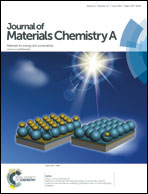Functionalized mesoporous structured inorganic materials as high temperature proton exchange membranes for fuel cells
Abstract
There are significant technological and economical advantages for operating a proton exchange membrane fuel cell (PEMFC) at temperatures above 100–150 °C. One of the key components in the development of high temperature PEMFCs is the proton exchange membrane (PEM). The PEM not only needs to be highly stable in the harsh chemical and physical environment in fuel cells, but also needs to possess high proton conductivity at elevated temperatures and under low humidity conditions. In this paper, the research activity and progress in the development of high temperature PEMs will be briefly reviewed but the main emphasis will be on the development of unsupported and functionalized nano and mesoporous structured inorganic materials such as TiO2, Fe2O3, Al2O3 and SiO2 as high temperature PEMs for fuel cells. Among various inorganic proton conducting materials, heteropolyacid (e.g., H3PW12O40 or HPW) functionalized mesoporous silica, HPW–meso-silica, shows particularly promising potential as new PEMs for fuel cells. The challenge and prospects of the development of functionalized mesoporous silica based PEMs for fuel cells operated at high temperatures (300–450 °C) are discussed.

- This article is part of the themed collections: 2014 Journal of Materials Chemistry A Hot Articles and Electrochemical Energy Storage & Conversion

 Please wait while we load your content...
Please wait while we load your content...